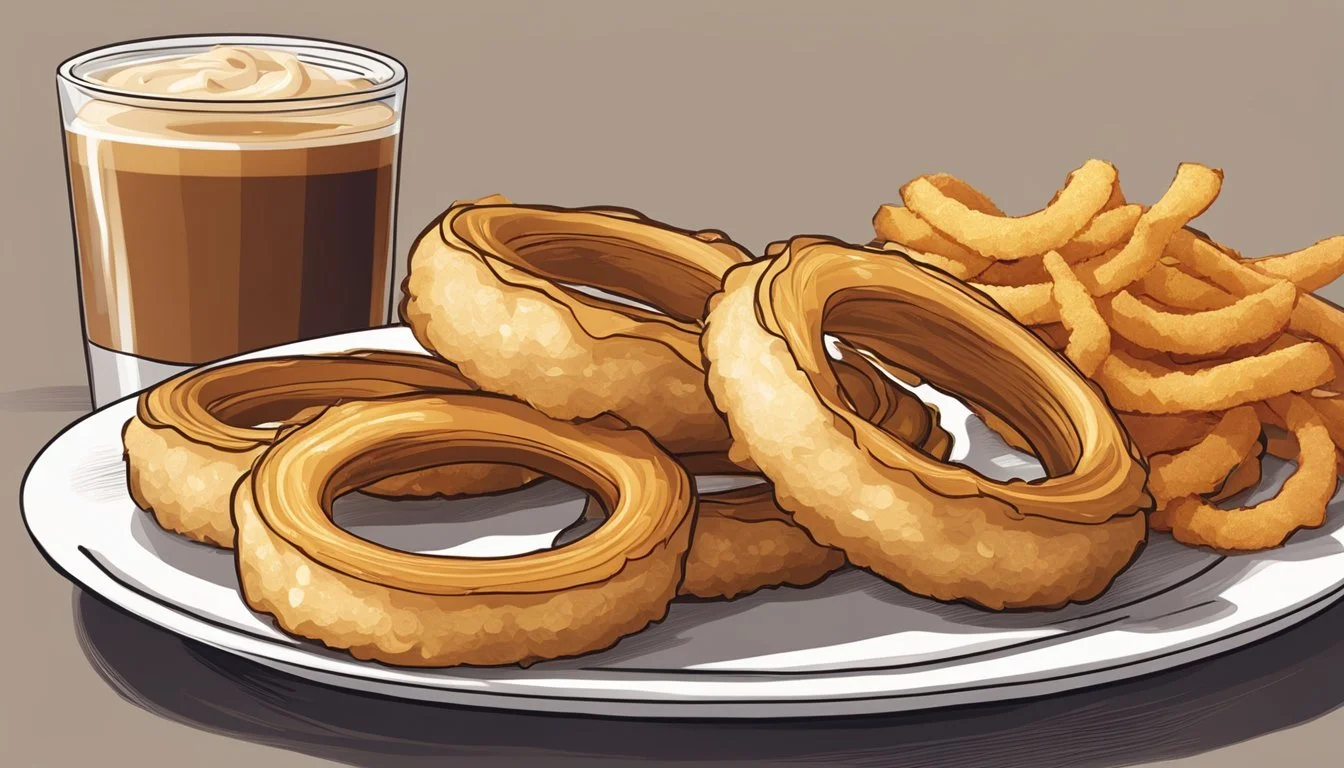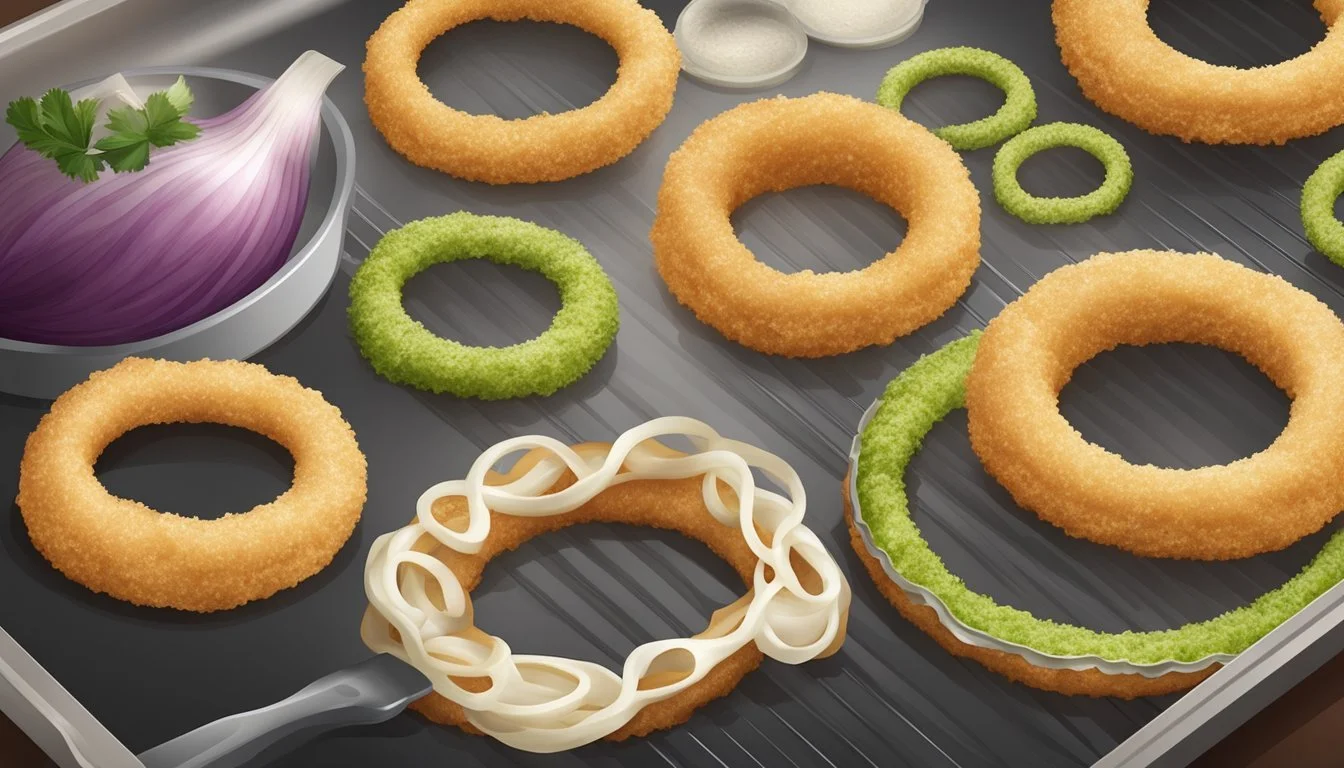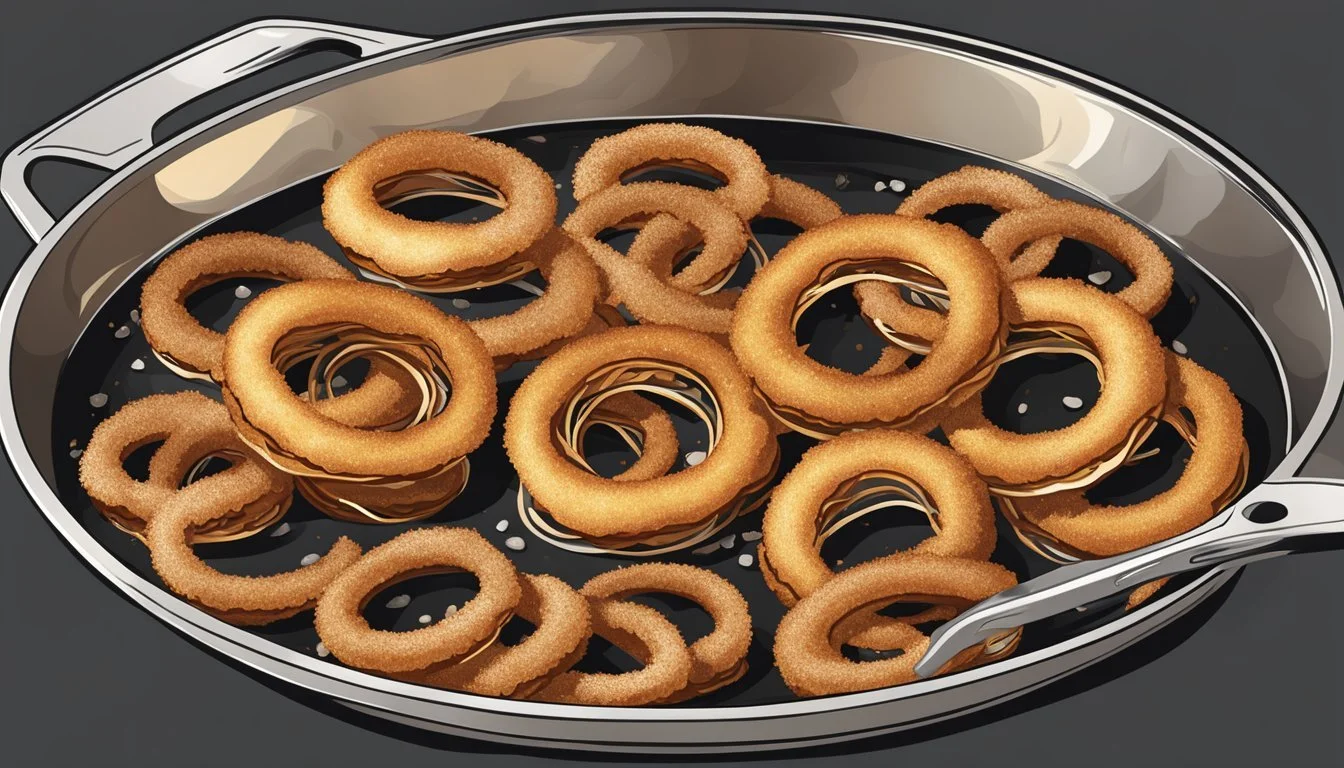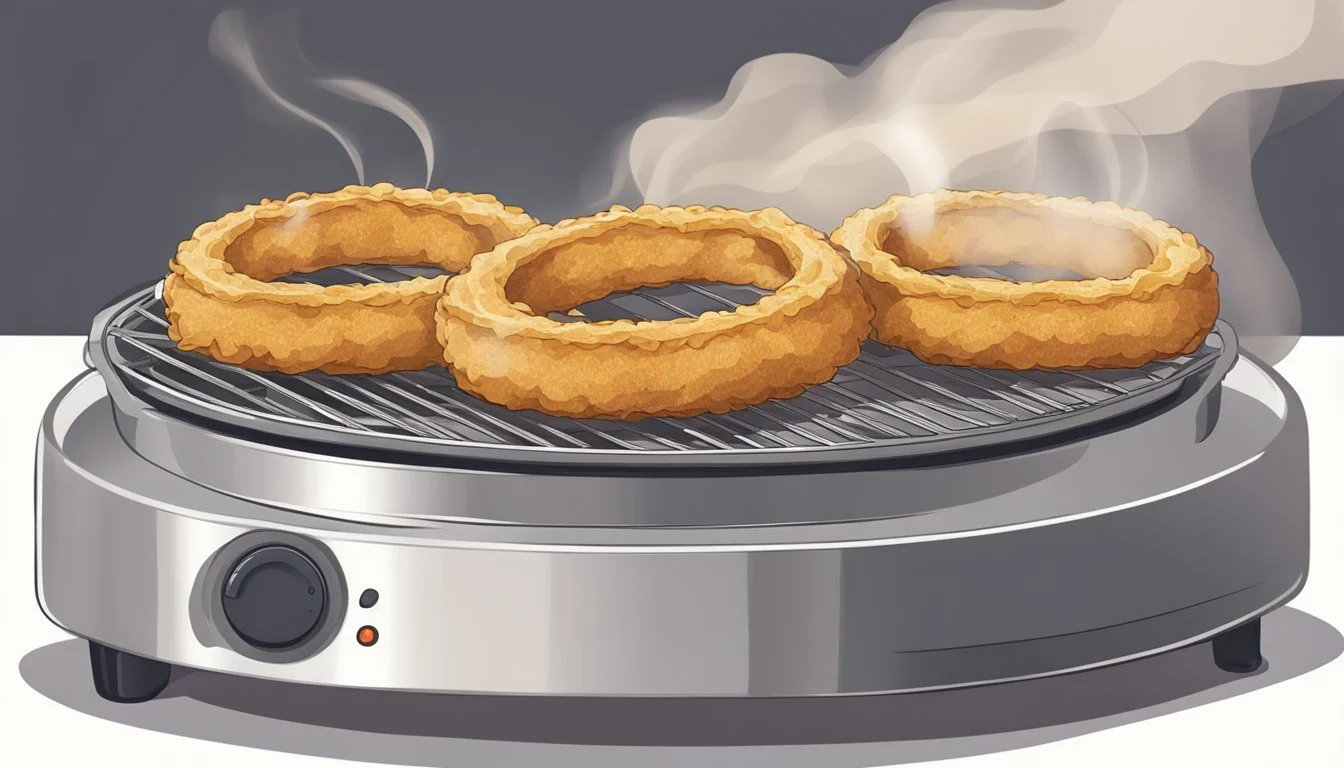How to Reheat Gluten-Free Onion Rings
Tips for Perfect Crispiness
Reheating gluten-free onion rings can be tricky, especially if you want to maintain their crispy texture and delicious flavor. Whether you’ve made a batch for an appetizer, snack, or side dish, knowing the best methods to reheat them ensures a satisfying experience every time. The best way to reheat gluten-free onion rings is to use an oven or air fryer, which helps maintain their crispiness without making them soggy.
Microwave reheating is often the fastest but not ideal for retaining crispiness. For those with celiac disease or gluten intolerance, ensuring the onion rings stay gluten-free during reheating is crucial. Using an oven preheated to 375°F and spreading the onion rings out on a baking sheet creates the perfect reheating environment.
An air fryer is another excellent option, offering a quick and efficient way to reheat without compromising the texture. It’s a versatile method that provides consistently crispy results, making it a favorite for many. By following these methods, your gluten-free onion rings can be enjoyed just as deliciously as when they were first cooked.
Understanding Gluten-Free Onion Rings
Gluten-free onion rings require specific ingredients and methods to achieve the right texture and taste. This section discusses the properties of gluten-free flours, alternatives to wheat flour, and the benefits of using gluten-free alternatives in frying.
Gluten-Free Flours and their Properties
Several gluten-free flours are suitable for making onion rings. Rice flour and brown rice flour are often used due to their light texture. Potato starch and tapioca starch add crispiness and help bind the ingredients.
The blend of these flours creates a batter that mimics the properties of all-purpose flour without gluten. Xanthan gum or guar gum is also included sometimes to provide elasticity.
Alternatives to Traditional Wheat Flour
Alternatives to traditional wheat flour in gluten-free onion ring recipes include a wide variety of grains and starchy ingredients. Cornmeal provides a unique, crunchy texture.
Gluten-free all-purpose flour blends are available commercially and offer a convenient substitute. Gluten-free beer can also be used in batters to give a lighter and fluffier texture, adding a slight complexity to the flavor.
Benefits of Gluten-Free Alternatives in Frying
Using gluten-free alternatives in frying has specific advantages. Gluten-free flours like rice flour and cornstarch create a lighter, less greasy coating. This results in crispier onion rings that absorb less oil.
Gluten-free ingredients often introduce different textures and flavors, making the dish more interesting for those with celiac disease or gluten sensitivity. These flours also tend to leave less residue in the frying oil, extending its usability.
Preparing Onion Rings for Reheating
Properly preparing onion rings for reheating ensures they retain their texture and flavor. This process involves initial cooking techniques, using the right batter, and storing leftovers correctly.
The Initial Cooking Process
When making homemade gluten-free onion rings, the initial cooking method is key. Start with thick slices of onions, preferably sweet Vidalia onions, for the best flavor. Coating the onions evenly with gluten-free batter helps in achieving a consistent texture.
Preheat oil to the right temperature (around 350°F or 175°C) before frying to avoid soggy rings. Fry the onion rings until golden brown, approximately 2-3 minutes per side. Drain excess oil by placing them on a paper towel-lined plate.
Using the Correct Batter
The batter plays a crucial role in the final quality of the reheated onion rings. A simple gluten-free batter can be made using cornstarch, egg, and milk. This combination ensures a crispy exterior that holds up well upon reheating.
Ingredients for Gluten-Free Batter:
Cornstarch: 1 cup
Egg: 1 large, beaten
Milk: 1 cup (dairy or non-dairy)
Whisk these ingredients together until smooth. Dip onion slices into the batter, making sure they are completely coated before frying. This method helps maintain the crispiness during reheating.
Storage Tips for Leftovers
Proper storage of leftover onion rings is essential for retaining their texture and flavor. Once cooked, allow the onion rings to cool completely. Transfer them into an airtight container to prevent moisture buildup.
For refrigerator storage:
Store in an airtight container for up to 3 days.
For freezer storage:
Lay the onion rings flat on a baking sheet and freeze for 1 hour. Then, transfer to a freezer-safe bag. They can be stored for up to 3 months.
When preparing for reheating, avoid overcrowding the container to keep the onion rings from sticking together. This ensures an even reheating process, preserving the intended taste and texture.
By following these steps, you can enjoy reheated gluten-free onion rings that are nearly as good as freshly made.
Reheating Methods for Gluten-Free Onion Rings
Reheating gluten-free onion rings can be done effectively using different methods to retain their crispy texture. Each method requires specific steps to avoid sogginess and maintain flavor.
Oven Baking for Optimal Crispiness
Oven baking is an excellent way to reheat gluten-free onion rings while ensuring they stay crispy. Preheat the oven to 350 degrees Fahrenheit. Use a paper-lined baking sheet to prevent sticking. Arrange the onion rings in a single layer. Covering them with a light spritz of oil helps to re-crisp the batter.
Bake for about 10-15 minutes. It’s crucial to monitor the temperature to avoid over-browning or burning. Flipping the rings halfway can also help in achieving even heating.
Air Fryer Technique for a Crunchy Texture
The air fryer is another great tool for reheating gluten-free onion rings, particularly for achieving a crunchy texture. Preheat the air fryer to 400°F. Lightly spray or brush the onion rings with oil. This not only prevents them from sticking to the basket but also helps in retaining the fried taste.
Reheat the onion rings for 3-5 minutes. Shake the air fryer basket halfway through to promote even heating. This method offers a quick solution without compromising on texture.
Microwave Tips to Avoid Sogginess
Using a microwave to reheat gluten-free onion rings can be challenging due to the risk of sogginess. Arrange the onion rings on a microwave-safe plate lined with a paper towel to absorb excess moisture.
Set the microwave on high for about 30-60 seconds. It's essential to check frequently to avoid overheating them. For better results, consider using a microwave crisper tray if available. This helps to reheat the rings more evenly and maintain some of their original texture.
Enhancing the Flavor of Reheated Onion Rings
To further improve the taste of reheated gluten-free onion rings, consider incorporating specific seasonings and pairing them with complementary dips and sauces.
Seasonings and Spices to Consider
Enhancing the flavor of reheated onion rings can be as simple as adding the right seasonings and spices. Salt and pepper are classic choices that can elevate the natural taste of the onion rings. A sprinkle of paprika or smoked paprika can add a mild, smoky flavor, while cayenne pepper provides a bit of heat.
For those who enjoy garlic, powdered garlic or garlic salt can be sprinkled on the rings. A touch of sugar can balance out the savory flavors. Vegetable oil helps seasonings adhere better; lightly brushing the rings with oil before reheating can make a significant difference.
Dips and Sauces for Extra Taste
Pairing reheated onion rings with the right dips and sauces enhances their overall taste and texture. Ketchup and BBQ sauce are classic, crowd-pleasing options. Marinara sauce offers a tangy, tomato-based flavor that pairs well with the crispness of the rings.
Ranch dressing and spicy mayo provide a creamy contrast to the crunch of the onion rings. For a touch of heat, a cayenne pepper or jalapeño dip can be used. Experimenting with different dips can keep the flavor interesting and enjoyable each time.
Best Practices for Deep Frying Gluten-Free Onion Rings
To achieve the perfect gluten-free onion rings, choosing the right oil, maintaining the proper oil temperature, and observing safety measures are critical.
Choosing the Right Oil
Selecting an oil with a high smoke point is essential for deep frying. Oils like canola, avocado, and vegetable oil are ideal as they can withstand high temperatures without breaking down.
Canola oil, in particular, is widely used due to its neutral flavor and affordability. Avocado oil, albeit more expensive, also performs exceptionally well in frying due to its high smoke point and health benefits.
Tip: Avoid oils with low smoke points, like extra-virgin olive oil, as they can burn easily and impart unwanted flavors.
Maintaining Proper Oil Temperature
Maintaining the correct oil temperature ensures perfectly crispy onion rings. The ideal temperature range for frying is between 350°F and 375°F. Use a thermometer to monitor the oil temperature accurately.
If the oil is too hot, the coating may burn before the onions inside are fully cooked. Conversely, if the oil is too cool, the onion rings can become greasy and soggy. For consistent results, cook in small batches and allow the oil to return to the desired temperature between batches.
Tip: A Dutch oven is a great choice for deep frying due to its excellent heat retention properties.
Safety Measures During Deep Frying
Safety is paramount when deep frying. Always use clean, dry utensils to place and remove onion rings to avoid oil splatters. Keep a well-fitted lid nearby to cover the frying pot in case of oil fires.
Never leave hot oil unattended and avoid adding too many onion rings at once, as overcrowding can lead to oil spills and uneven cooking. Ensure your work area is free from flammable materials and keep a fire extinguisher suitable for grease fires within reach.
Tip: Consider reusing frying oil no more than twice to maintain flavor and reduce waste. Filter the oil to remove any food particles after each use.
Nutrition and Dietary Considerations
Gluten-free onion rings provide specific nutritional values and can vary in their suitability for different dietary needs, depending on the ingredients and preparation methods used.
Calories and Macronutrients in Gluten-Free Onion Rings
The calories and macronutrient content of gluten-free onion rings can depend on the recipe and cooking method. Typically, a serving size (approximately 6-8 rings) may contain:
Calories: 150-300 kcal
Carbohydrates: 20-40 grams
Proteins: 2-5 grams
Fats: 5-15 grams
Comparatively, gluten-free onion rings made with a batter of brown rice flour, cornstarch, and cornmeal can have different macronutrient profiles than those made with a gluten-free flour blend. Baking vs frying can also significantly affect the fat content.
Suitability for Different Dietary Needs
Gluten-Free: These onion rings are suitable for individuals with celiac disease or gluten intolerance, as they use gluten-free flour in their preparation.
Dairy-Free: By using almond or other plant-based milks, these can be made dairy-free, catering to those with lactose intolerance or dairy allergies.
Vegan/Vegetarian: Vegan versions avoid animal products entirely by substituting eggs with flax eggs or other vegan binders. Vegetarian versions may include eggs but exclude meat.
Nutrient Content: Homemade varieties allow for control over sodium and sugar levels, ensuring healthier alternatives by avoiding excessive additives.
Adapting the recipes to fit these dietary needs can help meet the requirements of a wider range of individuals, offering flexibility for those with specific dietary restrictions.
Serving and Presentation Ideas
When serving gluten-free onion rings, thoughtful presentation can elevate an ordinary side dish to a memorable appetizer or snack. Attention to plating techniques and pairing with main courses and drinks can create an enjoyable dining experience.
Plating Techniques for Appeal
For an eye-catching presentation, serve the onion rings on a large platter lined with parchment paper. Stacking rings elegantly can create height and visual interest.
Using a small bowl for dipping sauces like garlic aioli or spicy ketchup can add both function and flair. Garnish with chopped parsley or paprika for a pop of color.
Serve with other similar appetizers, such as mozzarella sticks, to enhance the variety.
Pairing with Main Courses and Drinks
Gluten-free onion rings pair well with classic burgers. The crispy texture complements the juiciness of the burger.
For a lighter option, serve them as a side dish with fresh salads. They can also be a fun addition to family meals on game night.
When considering drinks, craft beers or chilled lemonades make excellent pairings.
Incorporating these pairing ideas enhances the overall dining experience and ensures that gluten-free onion rings shine both in taste and appearance.








